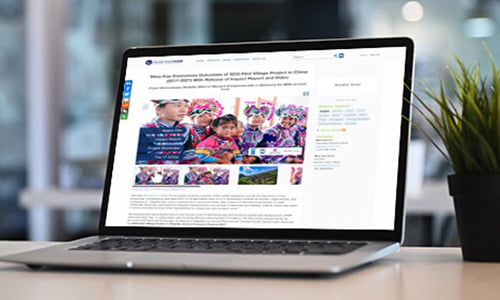Natural disasters and global disruptions have become increasingly frequent in recent years, significantly impacting societies, economies, and business operations. From the devastating hurricanes that batter coastal regions to the unpredictable nature of geopolitical conflicts, crises have the power to upend daily life and create widespread uncertainty. For governments, organizations, and communities, effective crisis management is often the difference between swift recovery and prolonged harm. At the heart of this effort lies the essential involvement of media relations.
Crisis management involves anticipating potential threats, preparing response strategies, coordinating rescue or relief efforts, and, most importantly, communicating essential information to the public. Media relations—the practice of building and maintaining relationships with journalists, news outlets, and media distribution networks—serves as the engine that drives this communication. When executed correctly, timely, accurate, and consistent messaging reduces panic and helps maintain public trust and minimize economic fallout.
The Relationship Between Crisis Management and Media Relations
What is Crisis Management?
Crisis management can be thought of as a four-phase cycle: preparedness, response, recovery, and mitigation. During preparedness, organizations and governments develop contingency plans, conduct training exercises, and establish communication protocols. The response phase begins once a crisis unfolds—this is where rapid deployment of resources, emergency services, and media statements occur. In the recovery phase, efforts shift to rebuilding infrastructure, restoring services, and providing long-term support to affected populations or markets. Mitigation focuses on lessons learned, incorporating feedback and improvements for future events.
Involving Media Relations
Media relations is important at every point in this cycle. Before a crisis, media teams can help build trust with journalists by providing transparent information and supporting community outreach. During the crisis, public information officers or designated spokespeople work closely with news outlets to update the public and stakeholders on developments. These updates might include evacuation orders, safety precautions, or the availability of emergency services. In the aftermath, well-coordinated communication strategies can highlight recovery progress and counter misinformation that could hamper rebuilding efforts.
Influence of the 24/7 News Cycle and Social Media
The current media environment is characterized by constant, real-time reporting, often driven by social media platforms. News travels faster than ever, meaning that even the slightest delay or misstep in communication can cause widespread confusion or panic. In scenarios where rumors spread unchecked, organizations risk losing control of the narrative, making crisis response more difficult. Conversely, a well-managed media strategy that leverages social media can quickly dispel rumors and foster a sense of transparency and leadership. This dual nature of modern news cycles underscores why media relations must be proactive, agile, and deeply coordinated with operational crisis management efforts.
Timely, Accurate, and Consistent Messaging in Crisis Situations
Timeliness
In a rapidly evolving crisis—such as a wildfire threatening a residential area—speed is paramount. Timely updates can mean the difference between an orderly evacuation and a chaotic scramble that endangers lives. If official sources fail to provide information quickly, the public may turn to unofficial or unverified channels, which can exacerbate confusion. One hallmark of effective crisis communication is the immediate release of basic facts—even if some details are still being clarified—to establish the organization or agency as a trusted source of information.
Accuracy
Equally important is accuracy. A well-intentioned but incorrect statement about evacuation routes, the severity of a natural disaster, or the status of military conflict can lead to disastrous outcomes. Once inaccurate information is out in the public domain, it can be extremely difficult to correct—especially in a digital environment that preserves old social media posts, screenshots, and articles indefinitely. Maintaining accuracy requires careful vetting of details, coordination with reliable sources, and transparent correction protocols if errors are discovered.
Consistency
No matter how quickly and accurately information is disseminated, inconsistency across different platforms undermines credibility. If an official website issues one directive while a social media channel offers contradictory advice, people are left uncertain about whose guidance to follow. Unified messaging requires close coordination among various communication teams and spokespersons, ensuring that press releases, social media updates, and live briefings align. Consistency is especially important for large organizations or government agencies with multiple branches, as any internal misalignment can quickly become public knowledge and erode trust.
Navigating Natural Disasters
Common Types of Natural Disasters
Natural disasters such as wildfires, hurricanes, earthquakes, floods, and tornadoes each pose unique communication challenges. Hurricanes often allow for some preparation time, making evacuation notices a priority, whereas earthquakes strike suddenly, emphasizing post-event rescue instructions and damage assessments. Wildfires can change direction rapidly, requiring frequent and real-time updates to prevent further harm.
Case Study: Hurricane Katrina (2005)
One of the most notable examples of crisis communication gone awry is Hurricane Katrina, which devastated large parts of the Gulf Coast of the United States in 2005. Conflicting reports from federal, state, and local agencies contributed to widespread confusion about evacuation procedures, shelter availability, and rescue operations. Media outlets like CNN, NBC, and local news stations played key roles in delivering updates; however, the inconsistent and, at times, vague official messaging undermined public confidence. This situation highlighted the necessity for a centralized and transparent communication strategy during large-scale emergencies.
Case Study: Australian Bushfires (2019–2020)
In contrast, the 2019–2020 Australian bushfires demonstrated how coordinated media relations could rally both domestic and international support. Fire departments and government agencies used real-time social media updates (particularly on Twitter/X and Facebook) to warn residents of imminent danger, suggest evacuation routes, and share maps of affected areas. Global media coverage helped generate funds and resources from around the world, underscoring how effective communication can not only save lives but also attract the support needed for relief and recovery.
Lessons Learned
From both events, two lessons stand out. First, pre-disaster planning is crucial. Clear lines of communication must be drawn in advance, with designated spokespersons and media liaisons trained to handle high-pressure situations. Second, media training for government officials and other leading figures can ensure consistent, clear messaging. By applying these lessons, future disaster responses can improve public safety, mitigate economic damage, and foster cooperation among local and international organizations.
Addressing Global Disruptions: Wars, Conflicts, and Geopolitical Events
Defining Global Disruptions
Global disruptions range from wars and conflicts to political coups and large-scale refugee crises. While natural disasters often have a clear beginning and end, geopolitical events can evolve over months or years, complicating the task of consistent communication. The impact of these disruptions reverberates across financial markets, supply chains, and consumer sentiment, making transparent and accurate messaging necessary for businesses and governments alike.
Case Study: Conflict in Ukraine (2022–Present)
The conflict in Ukraine, ongoing since 2014 and escalating significantly in 2022, illustrates the involvement of international news agencies (e.g., Reuters, the BBC, The Associated Press) in verifying on-the-ground information. Misinformation has been a prominent issue, as state-sponsored propaganda competes with official government statements and firsthand accounts from citizens on social media. Companies with operations in Eastern Europe, such as multinational manufacturers and retailers, have been forced to issue media statements clarifying how the conflict affects their supply chains, worker safety, and plans for continued engagement or withdrawal. The delicate balance between sharing facts and maintaining neutrality or brand reputation showcases the complexity of media relations in politically charged environments.
Case Study: The Arab Spring (2010–2012)
The Arab Spring protests, which swept across several Middle Eastern countries, demonstrated how social media could rapidly mobilize and inform populations. Traditional media often struggled to keep pace with the fluid developments on the ground, as activists broadcast real-time images, videos, and updates via platforms like Twitter/X, Facebook, and YouTube. However, this flood of user-generated content presented a verification challenge: false information, rumors, and manipulated media spread alongside credible eyewitness reports. News outlets had to adapt swiftly, employing digital verification techniques and collaborating with local journalists to ensure a balanced narrative.
The Business and Economic Ripple Effect
Wars and political upheavals can destabilize markets with companies operating in conflict zones facing potential production halts, restricted trade routes, or increased security costs. In such circumstances, proactive crisis communication is crucial not only for safety but also for financial transparency. Publicly traded companies, for instance, must address shareholder concerns through timely updates, quarterly reports, and press releases that detail how ongoing disruptions affect operations. Failure to communicate effectively can amplify panic, leading to a more severe economic downturn and reputational harm.
The Underlying Connection to Economic and Business Impacts
How Crises Affect Business Operations
Any crisis—natural or man-made—can create a domino effect that disrupts business activities. Supply network interruptions, employee displacement, and property damage can halt production or sales. Local communities and consumers may lose confidence in the organization if communication is lacking or contradictory. For example, a shipping company unprepared for a hurricane’s disruption could suffer not only damage to vessels but also risk losing major clients if it fails to inform them about delays or alternative shipping routes.
Investor Relations During Crises
In the corporate world, investor relations (IR) plays a parallel responsibility to public relations. When crises strike, shareholders want immediate clarity on how their investments may be affected. Publicly traded companies often issue press releases, earnings calls, and investor updates to keep their stakeholders informed. A robust media relations strategy works hand in hand with IR to ensure these messages reach financial analysts and the broader market. Timely disclosures can help stabilize stock prices, while delayed or vague communication can lead to panic selling or reduced valuation.
Brand Reputation and Consumer Trust
Crises have a way of laying bare an organization’s values and priorities. When companies offer timely and transparent updates—along with meaningful community support—there’s opportunity to strengthen their brand reputation. Conversely, an inability or unwillingness to address events can result in a long-term backlash. In a world where social media amplifies both praise and criticism, how a business handles a crisis can be as important as the crisis itself. Maintaining open, empathetic lines of communication fosters consumer trust, demonstrating that the organization is committed to public well-being over short-term profit.
Pivotal Strategies for Effective Media Relations in Crisis Management
1. Pre-Crisis Planning
Effective crisis management starts long before disaster strikes. Organizations should develop a crisis communication plan that includes:
- A designated crisis team responsible for decision-making and information vetting
- Spokespersons trained to handle media inquiries
- A contact list of journalists and media outlets for rapid dissemination of updates
- Templates for press releases and social media posts
Conducting crisis simulation drills can reveal gaps in your plan and help team members practice delivering consistent, accurate information under pressure.
2. Establishing Credible Spokespersons
Selecting and training a credible spokesperson can streamline messaging and foster public trust. This individual—whether a CEO, an operations manager, or a public relations specialist—should have:
- Deep knowledge of the organization or government department’s operations
- Excellent public speaking skills under stress
- The ability to explain complex data or situations in layman’s terms
3. Centralized Communication Channels
Inconsistency can arise when multiple departments or agencies release their own statements. Centralizing communications—for instance, via a unified website or official social media channels—prevents contradictory messages. Frequent updates in one easily accessible platform help stakeholders, employees, and the public follow the organization’s official line without confusion.
4. Monitoring and Countering Misinformation
Real-time monitoring of social media channels, news outlets, and online forums is necessary to quickly address rumors or inaccurate reports. Organizations can use specialized media monitoring tools and set up search alerts related to their brand or the crisis event. Once misinformation is spotted, prompt, factual corrections shared through official channels can prevent further spread. The objective is to remain composed, transparent, and polite, even when responding to speculation or criticism.
5. Building Long-Term Relationships with Media Outlets
In crisis situations, existing relationships with journalists and news outlets become invaluable. If reporters are already familiar with an organization’s spokesperson and trust their credibility, they are more likely to accurately convey official messages. Foster these relationships by hosting press briefings, participating in community events, and being available for interviews—even in non-crisis times.
Real-World Success Stories and Lessons
Case Study: New Zealand’s Response to Earthquakes
New Zealand, particularly the city of Christchurch, has endured multiple major earthquakes in recent decades. The government’s systematic approach to media relations helped mitigate the fallout. Centralized briefings, well-organized public service announcements, and frequent social media updates helped manage evacuations, distribute relief supplies, and keep local businesses informed about safety inspections. The result was a coordinated effort in which the public felt reassured and guided, highlighting how transparency and consistency can maintain social cohesion during chaotic times.
Case Study: Corporate Responses to COVID-19
The COVID-19 pandemic illustrated how organizations across the globe grappled with unprecedented levels of uncertainty. Some companies excelled by hosting virtual town halls for employees, issuing regular press releases on operational changes, and publishing detailed guidelines for customer safety. For instance, large tech firms and retailers used their expansive reach to share health information and direct the public to verified medical resources. Companies that managed to communicate consistently—including policy changes, office closures, or supply shortages—were often perceived as more trustworthy and socially responsible, reinforcing brand loyalty even amidst widespread disruption.
Future Trends in Media Relations and Crisis Management
Technology and AI
As artificial intelligence (AI) and machine learning tools become more sophisticated, they offer new opportunities for predictive analytics in crisis management. Algorithms can scan social media and news sites to detect patterns or spikes in conversation that might indicate an emerging crisis. Additionally, AI-driven content can help verify authenticity of user-generated images or videos before they reach mainstream audiences. However, these technologies must be used responsibly, as over-reliance on automated tools can overlook nuanced, on-the-ground realities.
Increasing Importance of Social Media Verification
Major platforms such as Twitter/X, Meta (Facebook & Instagram), and TikTok have rolled out verification badges, fact-checking partnerships, and labeling systems to help users discern reliable sources. While these measures are imperfect, they mark a step toward combating the deluge of misinformation that often accompanies large-scale events. From a media relations standpoint, being verified and recognized as an official account is vital in crises, as it reduces confusion about whether information is coming from an authorized source.
Public Expectation for Transparency and Speed
Today’s public expects instantaneous updates and full transparency. In an era of smartphones, citizen journalism, and viral content, organizations have limited leeway to “go silent” or release vague statements. This shift places additional pressure on crisis communication teams to remain nimble, authentic, and data-driven. Those that fail to meet these expectations may face backlash, including negative press coverage, boycotts, or loss of investor confidence.
Recap
Whether confronting hurricanes, earthquakes, wars, or pandemics, the need for reliable, rapid, and unified communication is a constant across all forms of crisis management. Media relations are directly connected in this effort, ensuring that factual information reaches the public, stakeholders, and investors in a timely manner.
Real-world crises like Hurricane Katrina and the conflict in Ukraine show that missteps in communication worsens confusion, delays relief, and erodes trust. Conversely, consistent transparency and engagement with news outlets enhance crisis response. The benefits are manifold: lives can be saved, economic damage can be lessened, and public trust can be preserved or even strengthened.
A strong media relations strategy involves pre-crisis planning, credible spokespersons, centralized channels, proactive misinformation monitoring, and long-term media relationships. Coupled with the right technological tools and cultural emphasis on transparency, these elements can empower communities and organizations to navigate turbulent times with resilience.
Learn More
- Transform Your Communications Approach
- PR, IR, & Media Relations Trends to Watch
- Crafting Public Policy Communications
- Write a Better Press Release Than AI
- News Release Do's & Don'ts
Get the latest PR, IR, Marketing, and Media tips on the Business Wire Blog. Subscribe today!




